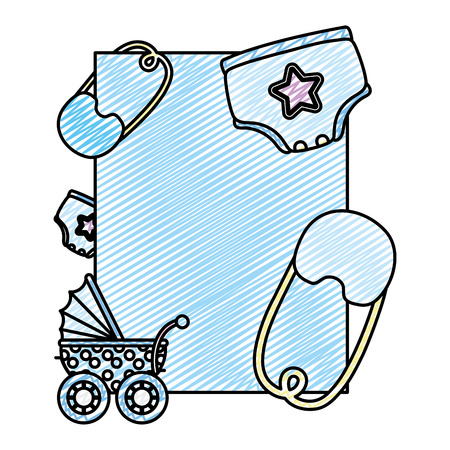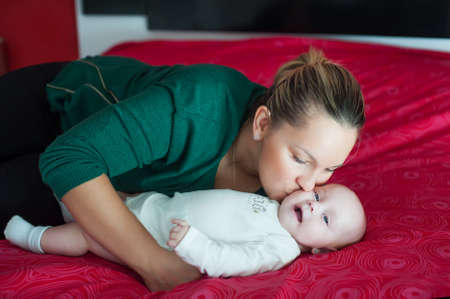Understanding Safe Sleep Guidelines in the UK
As a new dad navigating those sleepless nights, I quickly realised that creating the perfect sleep environment for my little one starts with understanding what’s safe—and in the UK, that means following trusted advice from the NHS and The Lullaby Trust. Both organisations are pillars when it comes to newborn sleep safety here, offering clear recommendations tailored to our unique British context.
First off, the NHS and The Lullaby Trust emphasise placing your baby on their back to sleep for every nap and overnight. This simple habit is one of the most effective ways to reduce the risk of sudden infant death syndrome (SIDS). What’s more, they recommend keeping your baby’s cot or Moses basket in your bedroom for at least the first six months—a practice that feels quite natural here in the UK, where our homes often have smaller bedrooms but close-knit family vibes.
Here’s a quick summary of their key recommendations:
| Guideline | NHS Advice | The Lullaby Trust Advice |
|---|---|---|
| Sleep Position | Always on the back | Always on the back |
| Room Sharing | Same room for 6 months | Same room for 6 months |
| Bedding | Firm, flat mattress; no pillows or duvets | No loose bedding or soft toys |
| Temperature | 16-20°C recommended | Avoid overheating; use light bedding/sleep bag |
| Cot Location | Away from radiators/windows/blinds cords | Safe distance from hazards and cords |
The uniquely British touch? We’re often dealing with colder nights and older houses, so both organisations suggest using a baby sleeping bag instead of extra blankets—making it easier to keep bub warm without risk of covering their head. Plus, it’s important to avoid bed-sharing, especially if you’ve had alcohol or are feeling extra tired (which, let’s face it, happens a lot in those early weeks!). These practical tips really helped me create a safe space for our little one, all while feeling confident I was doing things the “right” way for our family here in the UK.
Choosing the Right Cot and Bedding
As a new dad in the UK, one of the first things I learnt was that sleep safety is top priority for your newborn. The right cot or Moses basket can make all the difference. Here are some tips based on my own experience and what’s recommended by British safety guidelines.
Moses Basket or Cot: What to Choose?
If your little one is under six months, a Moses basket is a popular choice here in Britain—mainly because it’s cosy, easy to move from room to room, and fits snugly beside your bed for those night feeds. For older babies, or if you prefer something more long-term from the start, a cot is a great investment. Just make sure it conforms to current British Standards (BS EN 716 for cots, BS EN 1466 for Moses baskets). Look for the BSI Kitemark when shopping—it means the product has been tested for safety.
| Feature | Moses Basket | Cot |
|---|---|---|
| Age Suitability | 0-6 months | 0-2 years+ |
| Portability | Easy to move | Stationary or with wheels |
| Safety Standard | BS EN 1466 | BS EN 716 |
| Lifespan | Short-term use | Long-term use (can convert to toddler bed) |
| Bedding Size | Smaller sheets/blankets | Larger bedding sets/mattresses |
Bedding Tips for UK Weather
The British weather can be unpredictable—even in summer! It’s best to dress your baby in light layers rather than piling on thick blankets. Use a firm, flat mattress with a waterproof cover (essential for those nappy leaks) and fitted sheets made of breathable cotton. Avoid duvets, quilts, or pillows until your child is at least one year old; these increase the risk of overheating and suffocation. Instead, opt for cellular blankets—you’ll see them everywhere in UK baby shops—because they’re easy to layer and allow air circulation.
Checklist: Safe Cot & Bedding Setup
- Cot/Moses basket meets British Standards (look for BSI Kitemark)
- Firm, flat mattress that fits snugly with no gaps around the edges
- No soft toys, loose bedding, or bumpers inside the cot or basket
- Cellular blankets or baby sleeping bags rated for room temperature (TOG rating)
- Bedding and sleepwear made from natural fibres like cotton for breathability
- Avoiding overheating: keep bedroom temperature between 16–20°C (use a room thermometer if needed)
My Takeaway as a New Dad:
I found that sticking to these basics gave me peace of mind at night. A simple setup is often best—and means less fuss during those bleary-eyed midnight changes! Remember, safety always comes first when creating your newborn’s perfect sleep environment.

3. Room Temperature and Ventilation
As a new dad in the UK, I quickly learned that keeping our little one’s room at just the right temperature is key to a safe and comfortable sleep. The NHS recommends maintaining a nursery temperature between 16°C and 20°C – not too hot, not too cold. It sounds simple, but British weather can be unpredictable, with warm days turning chilly overnight or draughts sneaking in through old windows. That’s why I found using a reliable room thermometer essential. There are plenty of affordable options available from local baby shops and online retailers, many designed with easy-to-read colour zones so you know at a glance if the room is too warm or cool.
Choosing the Right Bedding: Grobags vs. Blankets
Another distinctly British approach is the use of grobags (baby sleeping bags), which are hugely popular here and a safer alternative to loose blankets. Grobags help regulate your baby’s temperature by keeping them covered without the risk of blankets being kicked off or covering their face during the night. They come in different togs – much like our duvets – for different seasons:
| Tog Rating | Recommended Room Temperature |
|---|---|
| 0.5 tog | Over 24°C (hot summer nights) |
| 1.0 tog | 21–23°C (warm) |
| 2.5 tog | 16–20°C (ideal for most UK nurseries) |
I found it handy to have at least two grobags in rotation, especially when those inevitable nappy leaks happen at 2am!
Tips for Good Ventilation
Ventilation matters too – stuffy rooms can make babies restless. On mild evenings, I sometimes crack open the window for a short while before bedtime to let fresh air circulate, being careful to keep windows locked or restrictors fitted for safety. In winter, we avoid placing the cot near radiators or direct draughts, and always check with the back of our hand that our baby isn’t getting too hot or cold.
Quick Checklist for UK Nurseries
- Use a digital or colour-coded room thermometer
- Select the right tog grobag for the season
- Avoid heavy bedding or pillows
- Ensure good but safe airflow in the nursery
Dad’s Tip:
I stick a little post-it near the thermostat as a reminder – tired brains appreciate simple hacks! Keeping your baby’s sleep space at the right temperature is one of those small things that makes a big difference for safe and peaceful nights in any British home.
4. Minimising Noise and Light
When it comes to creating the perfect sleep environment for your newborn in the UK, keeping their room calm and dark is absolutely crucial. British homes can sometimes be a bit noisy, especially if you live near a busy street or have older siblings making a racket! As a new dad, I quickly learned that even the smallest disturbances could disrupt those precious naps. Here are some practical suggestions—based on my own experience and what many UK parents swear by—to help minimise noise and light:
Blackout Blinds: A Must-Have in British Bedrooms
With our long summer evenings and early sunrises, regular curtains just don’t cut it. Investing in proper blackout blinds makes a massive difference. These blinds block out almost all sunlight, which helps your little one understand when it’s time for sleep, regardless of how bright it is outside.
White Noise Machines: Your Secret Weapon Against Noise
Whether it’s the sound of bin lorries on a Monday morning or neighbours having a BBQ in the garden, white noise machines are brilliant at masking sudden sounds. We found that the gentle hum creates a consistent background noise that not only soothes our baby but also helps him stay asleep longer.
Comparing Solutions for a Calm & Dark Nursery
| Solution | How It Helps | Typical UK Option |
|---|---|---|
| Blackout Blinds | Blocks out daylight for naps & bedtime | Dunelm or John Lewis blackout roller blinds |
| White Noise Machine | Masks household & street noise | MyHummy or Ewan the Dream Sheep |
| Thick Curtains | Adds extra darkness & insulation | Pencil pleat curtains from Argos or M&S |
Quick Tips for UK Parents
- If you’re renting and can’t install blackout blinds, try stick-on blackout sheets—they work wonders and peel off easily.
- A simple fan can double as white noise (and keep the room cool during those rare British heatwaves!).
By using these British-approved tricks, you’ll give your newborn the best chance at undisturbed sleep—even if the rest of the house is wide awake!
5. Essential Sleep Accessories for UK New Parents
When it comes to setting up a safe and cosy sleep environment for your newborn, there are a few must-have items that many UK parents swear by. As a new dad myself, I quickly learnt the difference a few well-chosen accessories can make to those precious hours of rest (for both baby and parents!). Here’s a rundown of essentials that feature in most British nurseries, along with why they matter.
Cellular Blankets
If you ask any seasoned parent or midwife in the UK, they’ll probably mention cellular blankets first. These classic, holey blankets are designed to keep your baby warm without overheating—a huge plus given our unpredictable weather. The tiny holes allow air to circulate, which helps regulate temperature and gives you peace of mind when tucking your little one in for the night.
Sleep Pods & Nests
Another popular choice is the sleep pod or baby nest. These soft, cushioned nests provide a snug space that mimics the comfort of the womb—something my little one found incredibly soothing during those early weeks. However, always follow NHS safety guidelines: sleep pods are best used for supervised naps rather than overnight sleeping in the cot.
Other Must-Have Sleep Items
| Accessory | Why UK Parents Recommend It |
|---|---|
| Moses Basket | Lightweight and portable—perfect for keeping baby close during daytime naps |
| Blackout Blinds | Helps create a dark, calming environment even during long summer evenings |
| Room Thermometer | Keeps track of nursery temperature, crucial for preventing overheating |
| Swaddle Blankets/Grobags (Sleeping Bags) | Safe alternative to loose bedding; keeps wriggly babies warm all night |
| White Noise Machine or Soft Lullaby Toy | Masks household noise and helps soothe your baby to sleep—life saver for city families! |
Final Thoughts from a New Dad
No two babies are exactly alike, but these tried-and-tested accessories are popular for good reason. My own experience has been that investing in quality basics like cellular blankets and blackout blinds makes nightly routines much smoother. Most importantly, always check that any sleep accessory meets British safety standards—peace of mind is priceless when it comes to your newborn’s rest.
6. Navigating Seasonal Changes
As any new parent in the UK quickly learns, our weather can be all over the place. One minute it’s freezing, and the next, you’re sweating buckets—even in the same day! So, when it comes to creating the perfect sleep environment for your newborn, adjusting for seasonal changes is key. Here are some tips I’ve picked up as a first-time dad braving both British winters and unpredictable summers.
Tips for Winter Nights
- Layer Up Smartly: Rather than one thick blanket (which isn’t safe anyway), go for layers of breathable cotton or cellular blankets. That way, you can add or remove layers as needed.
- Room Temperature: Keep your baby’s room between 16°C and 20°C. I use a room thermometer, which I bought online for a fiver—best investment ever!
- Sleepwear: A long-sleeved sleepsuit with a tog-rated baby sleeping bag works wonders. Check the tog rating; 2.5 tog is usually ideal for winter.
Tips for Summer Swelter
- Keep It Cool: On those rare hot nights, open windows (with safety locks!) or use a fan placed away from your baby’s cot to circulate air—not directly on them though.
- Lightweight Bedding: Swap to a low-tog sleeping bag (0.5–1 tog) or just dress your baby in a vest or nappy if it’s really hot.
- Avoid Overheating: Don’t overdress your baby—less is more when it comes to summer sleepwear.
Quick Reference Table: Seasonal Sleep Adjustments
| Season | Room Temp | Bedding/Sleepwear |
|---|---|---|
| Winter | 16–20°C | Long-sleeved sleepsuit + 2.5 tog sleeping bag |
| Summer | 18–21°C | Cotton vest or nappy + 0.5–1 tog sleeping bag |
Final Thoughts from a Sleep-Deprived Dad
No matter the season, always check your baby’s chest or back to see if they’re too hot or cold, rather than just feeling their hands or feet. Trust me, you’ll get good at this! Adapting your little one’s sleep space with the British weather in mind not only keeps them comfortable but also gives you peace of mind—so hopefully, everyone gets a bit more kip!


